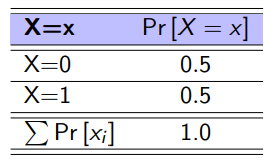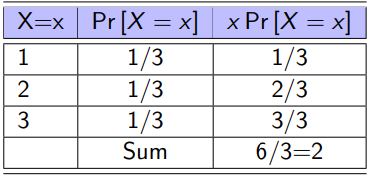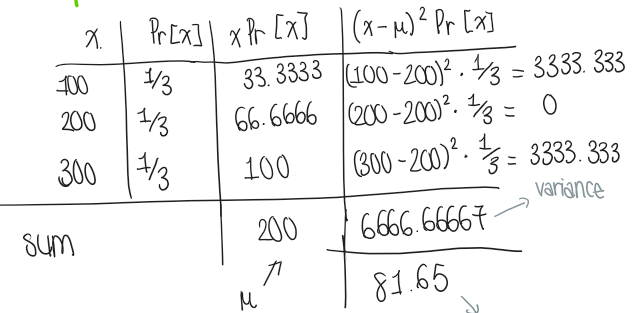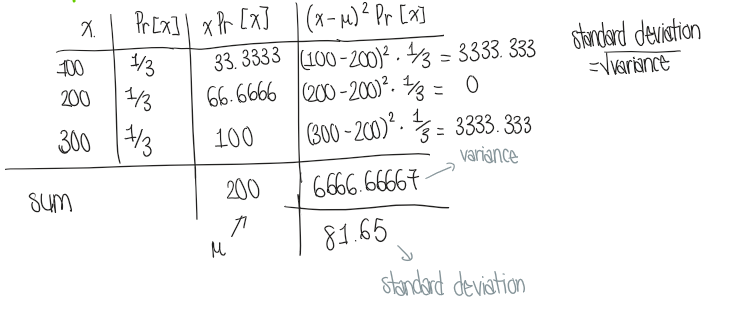Handout 3: Expected value, variance, standard deiviation
1/4
Earn XP
Description and Tags
Week 3
Name | Mastery | Learn | Test | Matching | Spaced |
|---|
No study sessions yet.
5 Terms
What is a random variable?
A way to denote that what happens is up to chance
Discrete (finite number of outcomes)
Continuous (infinite number of outcomes)
What is the probability model?
Consists of:
The possibilities (the values that a random variable could take on)
The probabilities of each occurring

What is expected value E[X]?
The typical result
In a table, the expected values mean nothing individually, but mean something when added up
Possibilities x Probabilities → find the sum

What is variance?
The measure of spread/risk → how much variation in outcome is expected
always positive
= ( x - expected value)² x Pr(x)
Variance = Standard deviation²

What is standard deviation?
shows how spread out or clustered the data points are
Standard deviation = √variance
